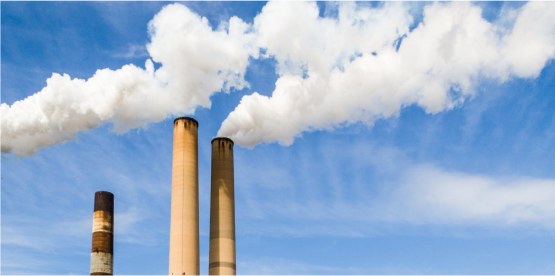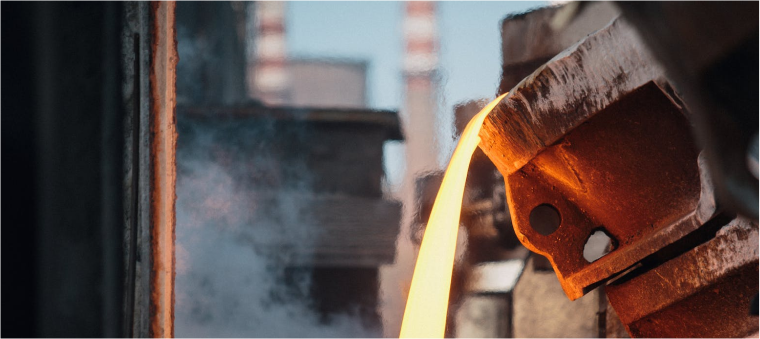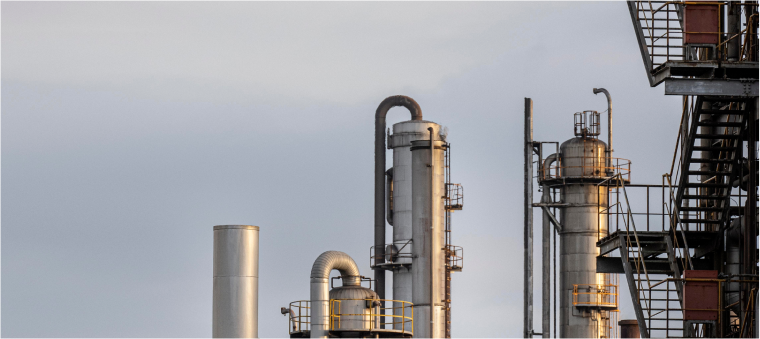
> Cleaning compressed air pressure: 6 bar(g)
> Compartmentalized (individual compartment isolation)
> Online/offline cleaning
> Maximum bag length: 6.5 m
> Particulate emission: less than 5 mg/Nm³, if necessary
> Treatment and Disposal of Solid Material
> Modular design, with circular modules (greater mechanical strength)
> Cleaning air pressure: 0.4 bar(g)
> More efficient cleaning (only two bags per pulse)
> Always online cleaning
> Maximum bag length: 12.0 m
> Particulate emission: less than 5 mg/Nm³, if necessary
> Used in customized applications in electric steel plants..
> Gas filtration is carried out in the inside-to-outside direction of the sleeves.
> Sleeve cleaning is performed by reversing the gas flow through the filter fabric.
> Flow reversal is achieved using dampers, utilizing the system's own clean flow
or with the assistance of a specific fan for the cleaning system.
> Sleeves have customized nominal dimensions of 300 mm in diameter and
10,000 mm in length.
Used for coal, oil, biomass boilers, chemical recovery boilers, lime kilns
(metallurgy and pulp and paper), and cement kilns, among others.
> Distance between collector plates: 300 mm to 400 mm
> Field height: up to 12 m
> Field length: up to 3.7 m
> Electrode: rigid
Applied in sintering, pelletizing processes, and coal boilers.
> Distance between collector plates: 300 mm or 600 mm (exclusive technology)
> Field height: up to 15 m
> Field length: up to 5.25 m
> Electrode: rigid.
Enfil offers wet, semi-dry, or dry gas desulfurization systems.
Primarily applied in large thermal power plants and/or boilers. Acid gases react with the
limestone slurry, forming calcium sulfite, which is then oxidized to sulfate through aeration.
After dewatering, the resulting solid residue has commercial value and can be used, among
other things, in construction (e.g., gypsum board manufacturing).
SOx removal efficiency: up to 98%
Uses seawater as the reagent for SOx absorption, i.e., the natural alkalinity of seawater is
responsible for SOx elimination from the gas phase. Similar to the limestone process, the
sulfite generated in the absorption reaction is oxidized to sulfate through aeration. The
major advantage of this process is the absence of byproducts, meaning the water used in
gas washing is discharged back into the sea.
SOx removal efficiency: up to 98%
In this process, the reagent, a suspension of hydrated lime, is injected by rotary atomizers
into the absorption tower, where simultaneous absorption of SOx and evaporation of water
from the suspension occur. After absorption in the tower, the gases are sent to a bag filter
or electrostatic precipitator, where the dry process byproduct is captured. This byproduct
has no commercial value.
SOx removal efficiency: up to 92%
Pulverized hydrated lime is injected into the absorber, where it reacts with the SOx in the
gas phase. The gases are directed to a bag filter or electrostatic precipitator. Part of the
collected material is recirculated, and part is discarded.
Enfil offers NOx removal systems, in boilers, heaters, dryers, ovens and
general industrial processes. The NOx reduction catalytic systems (SCR)
consists of the catalytic reduction of NOx to N2 and H2O by injection of NH3 or
solution of ureia in the presence of a catalyst.
> Blast furnace: casting house, stock house, and blast furnace gas;
> Sintering: primary and secondary exhaust;
> Steel mill: primary and secondary exhaust;
> Coke oven: coke discharge;
> Torpedo car – pan cleaning – and cutting – scale cleaning;
> Scarfing, lime kiln;
> Others.

> Iron pelletizing – primary, secondary, and environmental exhaust;
> Cement kiln;
> Clinker cooler;
> Lime kiln;
> Non-ferrous metallurgy;
> Others.

> Chemical recovery boiler;
> Biomass boiler;
> Lime kiln;
> Others.

> Oil-fired boilers;
> Biomass boilers;
> Coal-fired boilers;
> Others.

> Glass furnace

© Enfil – 2025. Site mantido por JOM – Jonnpo Marketing.